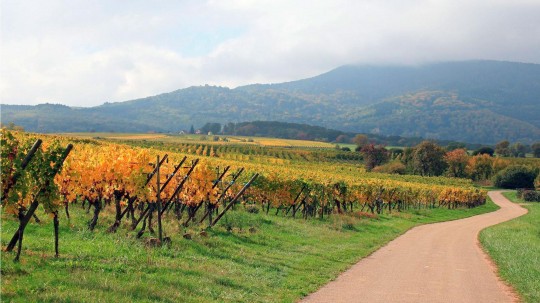It is one of those charming villages that is little known to visitors. It presents itself as a beautiful uniform setting where one can discover half-timbered, Rennaisance or very flowery houses and beautiful fountains. The village is situated in a beautiful 470-hectare vineyard environment, one of the largest in Alsace, which can be characterised as a wine city.
Inhabited by over 2000 people, it lies 50 km from Strasbourg and 30 km from Colmar next to Sélestat.
The rise of the vine
The first mention of the town dates back to the 12th century, when it was a village belonging to the lord of Berstein. The village then came under the supervision of the bishops of Strasbourg, ramparts were added in the 14th century and it then obtained the status of town. It also experienced a period of desolation during the Peasants' War in the 16th century and for the next 30 years.
It is from the 17th century that the town began to prosper with the rise of the culture of the vine. It is said that this started with the appearance of a child walking in the woods who saw a bear feasting on lambrusque berries (wild grapes). The people then began to grow grapes, and the bear became the symbol of the town.
On the Alsace wine road
Inaugurated in 1953, the Alsace wine route is one of the most famous in France. Throughout the year, it offers its neophyte or connoisseur visitors many activities related to wine and the vineyard.
Recently, it began organising an annual " SLOW UP " , which consists of leaving cars behind and walking or cycling along part of the route.
It winds for 170 km from the north to the south of the region, from Marlenheim to Thann, and crosses 70 wine villages which are reputed to be the finest in the region.






